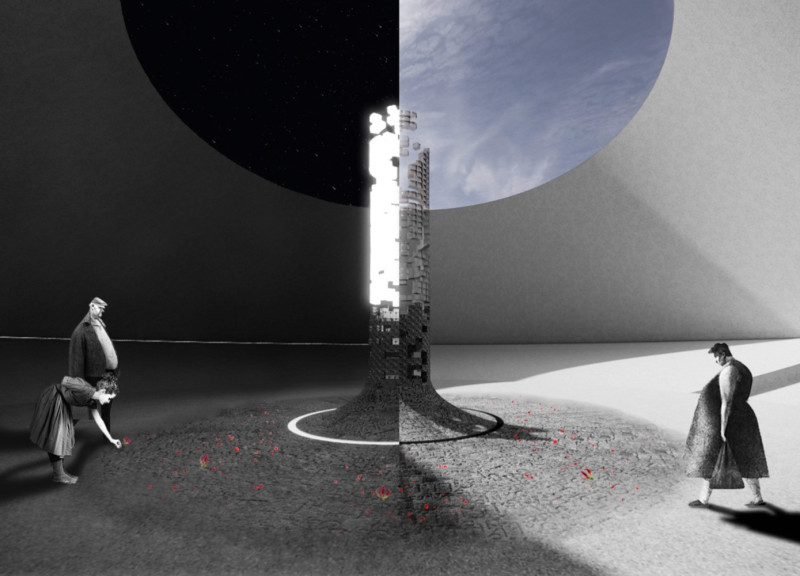5 key facts about this project
The Ninaivu Memorial is located in Chinguacousy Park, Brampton, Canada. It pays tribute to the victims of the Tamil Genocide during the Sri Lankan Civil War. This memorial is designed to honor those who lost their lives and to raise awareness about the historical struggles faced by the Tamil community. The design includes three distinct elements that guide visitors through the experiences of oppression, survival, and contemplation.
Paragon of Oppression
The first element, the Paragon of Oppression, features two large planes that create a narrow pathway leading to a stairway. This layout emphasizes the heaviness of the historical violence inflicted on the Tamil community. As people move through the constricted space, they are surrounded by a sense of confinement. This design encourages visitors to reflect on the difficult past and the challenges that the community has faced over time.
Paragon of Survivors
The next element is the Paragon of Survivors, marked by a pixelated column that rises toward the sky. This column symbolizes hope and resilience as it transforms from a solid base into a more open form. By ascending visually, it represents the journey of healing and remembrance. Visitors are encouraged to recognize and honor the lives lost while also thinking about the strength of those who survived. The structure invites engagement, establishing a deeper emotional connection.
Paragon of Aftermath
The final component, the Paragon of Aftermath, includes a slope and a tilted wall that enclose the monument. This design creates an open void, allowing space for thought and reflection. Visitors can engage with their feelings of loss and consider the lasting effects of the genocide. The arrangement of solid forms against empty space prompts a quiet understanding of the memorial's significance, encouraging introspection about the impact of such historical events.
The memorial also serves as a community space for the Tamil population, allowing for various gatherings and events. This design allows for a shared sense of identity among community members. The three elements work together to provide a cohesive narrative, grounding the themes of remembrance in personal and collective experiences.
The pixelated column stands out with its soft edges, shifting form, and elevation. It contrasts with the heavy planes of the Paragon of Oppression, suggesting a narrative of loss and resilience. This balance of form and space creates a significant representation of the community's ongoing journey.






















































